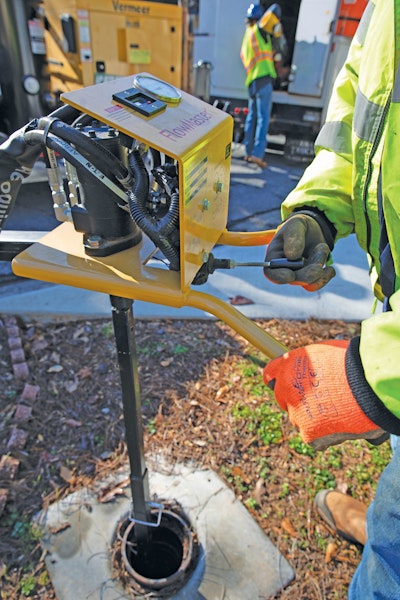
Roswell Water Utility crew leader Casey Schoals flushes a hydrant. (Photography by Kaylinn Gilstrap)
It was the presence of a swift-moving stream that led to the founding of Roswell, Georgia, and its earliest infrastructure — a cotton mill. Big Creek, as the stream is known today, is still a critical piece of the city’s natural infrastructure.
The Roswell Water Utility is...








